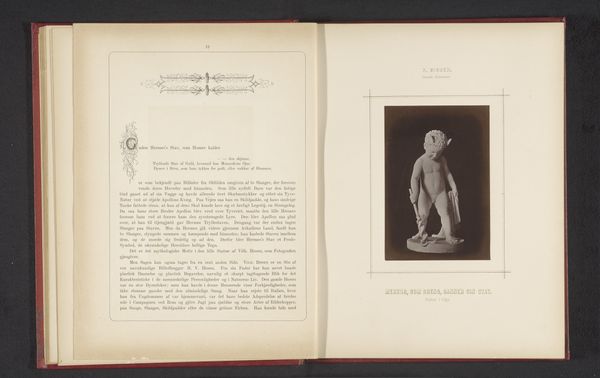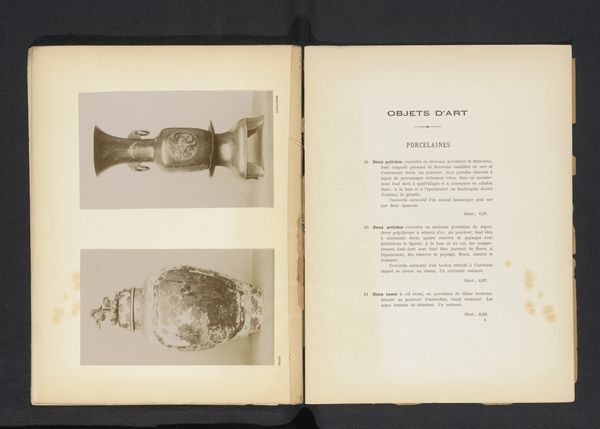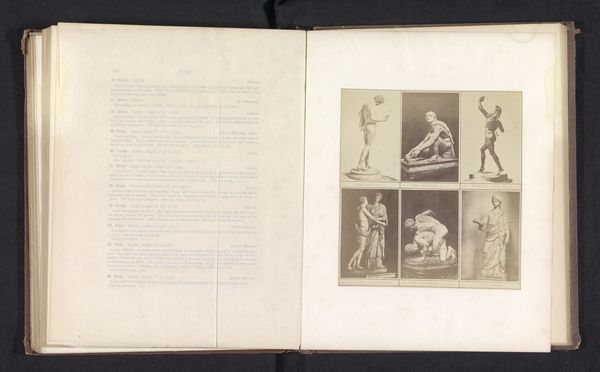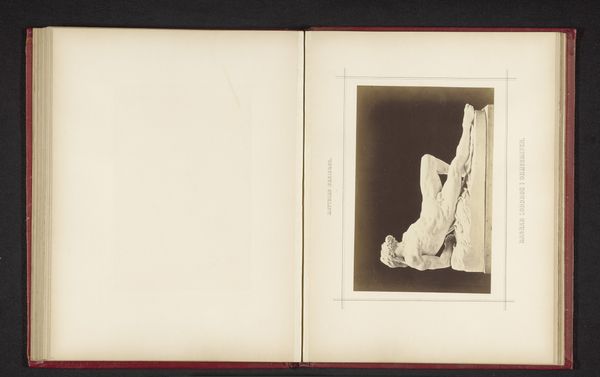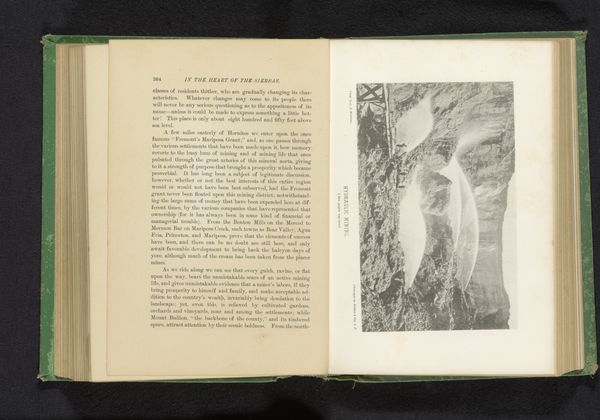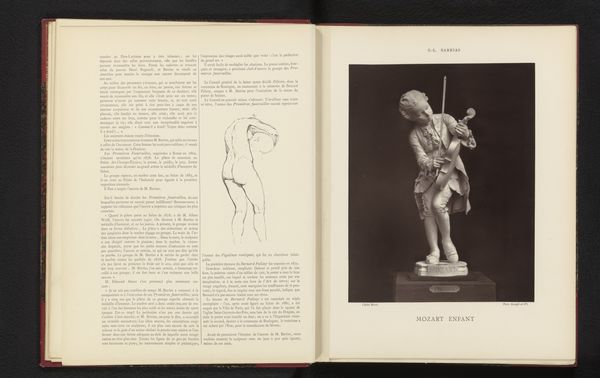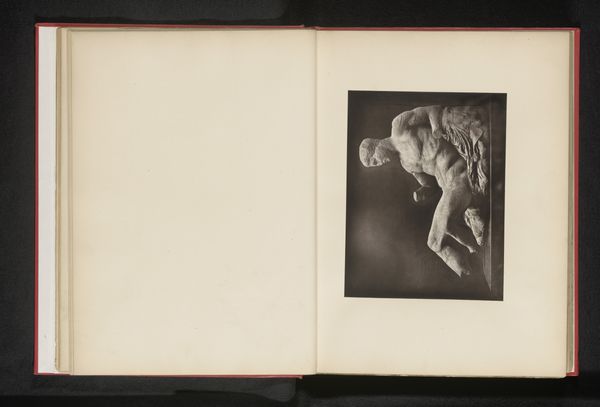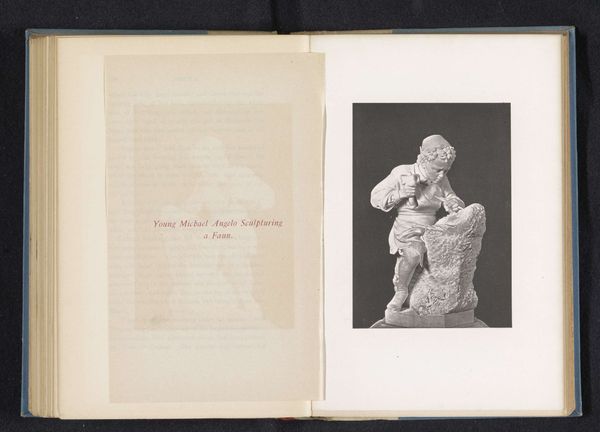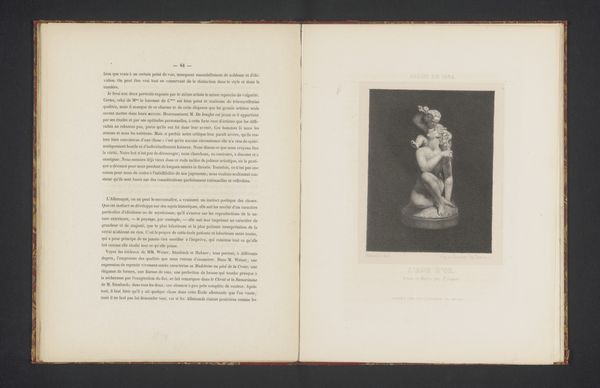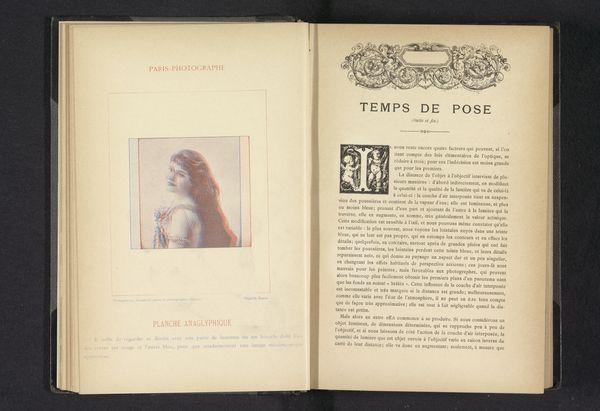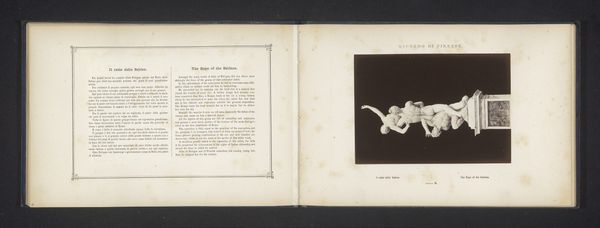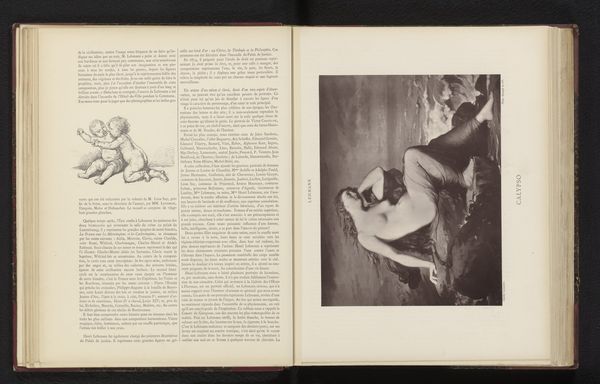
print, photography, sculpture, marble
#
portrait
#
still-life-photography
# print
#
classical-realism
#
photography
#
sculpture
#
academic-art
#
marble
#
nude
Dimensions: height 159 mm, width 105 mm
Copyright: Rijks Museum: Open Domain
Editor: Here we have a photograph of "Sculptuur van een naakte vrouw die uitkijkt" - a sculpture of a nude woman by Johannes Takanen, made before 1878. It looks like a print from a book. The pose is striking; she seems to be shielding her eyes, gazing into the distance. What story do you think this piece is trying to tell? Curator: Well, let's consider the social context. The late 19th century was a time of both increasing artistic freedom and rigid social constraints, particularly around the female nude. This photograph is of a marble sculpture, likely created within an academic setting. How might the display of such a sculpture in a public gallery reflect or challenge societal norms of the time? Editor: I hadn't thought about the tension between artistic expression and social norms. It feels classical but almost…yearning. Curator: Exactly! The academic art style drew heavily from classical antiquity, which traditionally idealized the nude form. But here, she’s actively *looking*, engaged with something beyond herself. This departs from the purely decorative function sometimes ascribed to nudes in art. Consider the viewer's role - does her gaze invite us to look with her or does it suggest something more profound? Who was this art made for? Editor: So, it's not just about idealizing beauty but also about…intellectual engagement? The institution validating a type of artistic message? Curator: Precisely! The sculpture becomes a statement within the visual culture of the time, contributing to evolving ideas about femininity, public space, and art’s potential role. And the photographic reproduction makes the work more accessible – how might that impact its reach and meaning? Editor: Wow, I never would have considered how photography itself played a part in disseminating this type of work! This makes me wonder what kind of access ordinary people might have had to it. Curator: It illustrates how understanding social context deeply informs how we appreciate and interpret art, right? Editor: Absolutely. Thanks for illuminating those nuances!
Comments
No comments
Be the first to comment and join the conversation on the ultimate creative platform.
